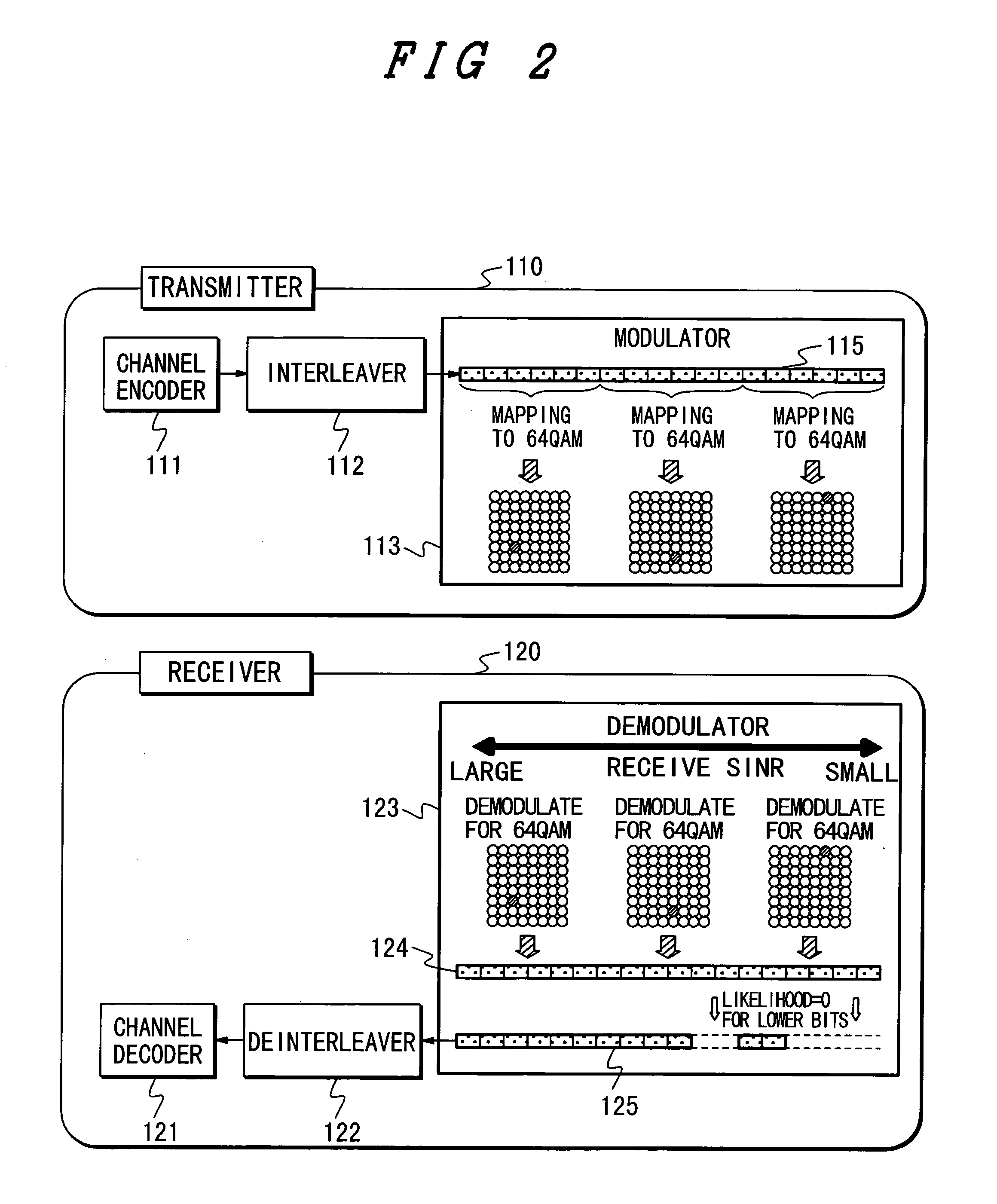Wireless communication system, and demodulation method and data rate control method therefor
- Summary
- Abstract
- Description
- Claims
- Application Information
AI Technical Summary
Benefits of technology
Problems solved by technology
Method used
Image
Examples
Embodiment Construction
[0025] In the following, several embodiments of the present invention will be described with reference to the accompanying drawings. While the following embodiments are described in connection with a scheme which sets a maximum number of transmission bits per symbol to six bits, and employs 64 QAM for modulation in a transmitter and 64 QAM or 16 QAM or QPSK for demodulation in a receiver, the present invention is not limited to such a maximum number of transmission bits or modulation schemes, but can be similarly applied to a more general scheme which sets the maximum number of transmission bits per symbol to 2 m bits, and employs 22m QAM for modulation in a transmitter and 22k QAM (k is a natural number equal to or less than m) for demodulation in a receiver. Also, assume in the foregoing that when k=1, 4 QAM represents the same modulation scheme as QPSK.
[0026]FIG. 1 illustrates a schematic diagram which represents a first implementation of a modulation / demodulation method in the ...
PUM
 Login to View More
Login to View More Abstract
Description
Claims
Application Information
 Login to View More
Login to View More - R&D
- Intellectual Property
- Life Sciences
- Materials
- Tech Scout
- Unparalleled Data Quality
- Higher Quality Content
- 60% Fewer Hallucinations
Browse by: Latest US Patents, China's latest patents, Technical Efficacy Thesaurus, Application Domain, Technology Topic, Popular Technical Reports.
© 2025 PatSnap. All rights reserved.Legal|Privacy policy|Modern Slavery Act Transparency Statement|Sitemap|About US| Contact US: help@patsnap.com



